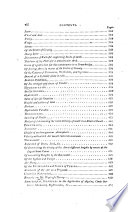 | Isaac Dalby - Mathematics - 1806 - 526 pages
...difference. Of involving Surds: And extracting their Roots. 124. SURDS are involved by multiplying the index by the exponent of the power to which it is to be raised. (100). Thus, the cube of a? is aj X 3 = a*. And the square of (a*— x*)2 is (a*— x*)^ X 2 = a* —... | |
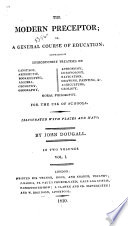 | John Dougall - 1810 - 734 pages
...required in the question. Involution of Roots is performed by multiplying the logarithm of the given number by the exponent of the power to which it is to be raised, when the product will be the logarithm of the power required. For example, rajse 8 to the 2nd power,... | |
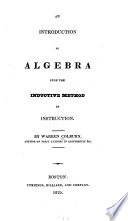 | Warren Colburn - Algebra - 1825 - 400 pages
...and third. The power of a literal quantity, we have just seen, is found by multiplying its exponent by the exponent of the power to which it is to be raised. The second, power of a3 is a3x* = a' ; consequently the second root of a6 is a¥ =; a3. The third power... | |
 | Warren Colburn - Algebra - 1826 - 290 pages
...which is already a power of a compound quantity, may be raised to any power by multiplying its exponent by the exponent of the power to which it is to be raised. 1. Express the 2d power of (3 6 — c)4. 8. Express the 3d power of (a — c + 2 d)'. 9. Express tjie... | |
 | Warren Colburn - Algebra - 1828 - 330 pages
...which is already a power of a compound quantity, may be raised to any power by multiplying its exponent by the exponent of the power to which it is to be raised. 7. Express the 2d power of (3 6 — c)4. 8. Express the 3d power of (a — c + 2 rf)5. 9. Express the... | |
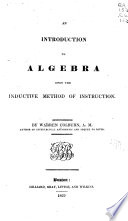 | Warren Colburn - Algebra - 1829 - 284 pages
...is already a power of a compound quantity, may be raised to any power by multiplying its exponent oy the exponent of the power to which it is to be raised. 7. Express the 2d power of (36 — c)4. 8. Express the 3d power of (a — c 9. Express the 7th power... | |
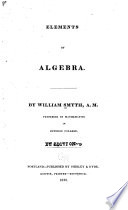 | William Smyth - Algebra - 1830 - 278 pages
...whence the logarithm of ym = mx = m log y. That is, the loganthm of any power of a number is eqiial to the product of the logarithm of this number by...corresponding to this product, will be the power sought. Again let it be required to find the nth root of y. We have as before a* = y whence taking the nth... | |
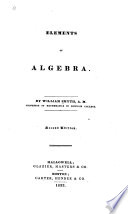 | William Smyth - Algebra - 1833 - 288 pages
...equation a* = y raising both members to the mth power, we have amx — ytn whence the logarithm of yx= mx = m log y. That is, the logarithm of any power...power sought. 4. Again, let it be required to find the »th root of y. We have as before OPi = y whence taking the nth root of both members, we have j^ .... | |
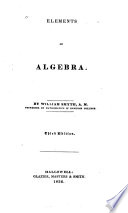 | William Smyth - Algebra - 1836 - 288 pages
...raising both members to the 7nth power, we have amx = y'" whence the logarithm of ym = mx == m log y. To form any power whatever of a number by means of...power sought. 4. Again let it be required to find the nth root of y. We have as before ax = v whence taking the nth root of both members, we have XI an —... | |
 | Warren Colburn - Algebra - 1838 - 282 pages
...already a power of a compound quantity, may be raised to any poiver by multiplying its exponent oy the exponent of the power to which it is to be raised. 7. Express the 2d power of (3 b — c)4. 8. Express the 3d power of (a — c + 2 d)\ • '9. Express... | |
| |